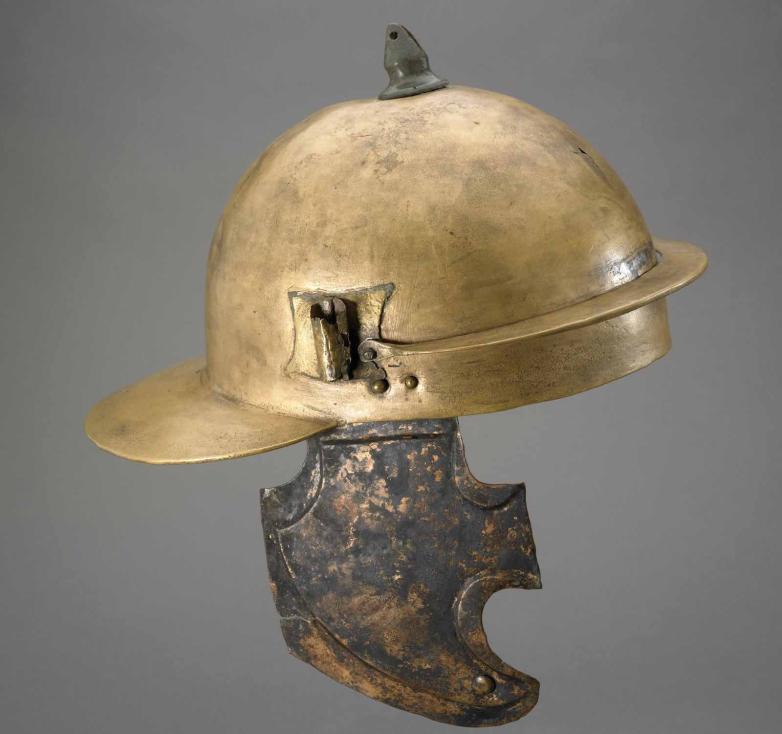Roman Legionary's Letters and Vindolanda Tablets in British Museum's new Blockbuster Legion

Copper alloy Roman legionary helmet
A major new exhibition at the British Museum will look at what it was like to be in one of the most elite fighting forces of all time. Objects include letters written on papyri by soldiers from Roman Egypt and the Vindolanda tablets, some of the oldest surviving handwritten documents in Britain, from the fort near Hadrian's wall that reveal first-hand what daily life was like for soldiers and those who accompanied them.
Legion: life in the Roman army willexplores the reality of daily life for the men, women and children who were part of the machine which allowed Rome to master its vast empire. Protecting a superpower for over half a millennium, the imperial Roman army acted as a military, naval and police force to around a quarter of the Earth’s population. However, life for the majority of those serving was surprisingly domestic, with many living in settled military communities stretching from Scotland to the Red Sea.
Legion will share the stories of real legionaries and will challenge some of the perceptions about what it meant to be a Roman soldier by showing the army was as much an engine of social change as a formidable war machine. Recruits came from all walks of life and joined to advance themselves, acquire Roman citizenship, and support their families, despite a general ban on marriage.
The exhibition focuses on the experiences of ordinary soldiers, both the citizen legionaries and the non-citizen auxiliaries, as well as their families. Following the life of one legionary whose letters home have survived the centuries, Claudius Terentianus, the exhibition will take visitors on a journey from enlistment to retirement. Over several letters, Terentianus recounts his failed attempt to join the legions in about AD 110. He writes home asking for clothing and equipment and reports his struggles to fit in. While hoping for a transfer, he was deployed to the eastern front in Trajan's war with Parthia. He eventually achieved his goal, becoming 'a soldier of the legion' as he called himself and his survival into retirement.
This blockbuster exhibition is made up of over 200 objects. Many of the items will be on display in the UK for the first time ever, including the world’s only intact legionary shield - on its maiden transatlantic loan from Yale - and the oldest and most complete classic Roman segmental body armour, recently unearthed from the battlefield at Kalkriese (Germany) in 2018.
One standout exhibit includes the remains of a soldier found at Herculaneum, who will be reunited with his belt and equipment for the first time outside of Italy. He is believed to be one of the marines commanded by Pliny the Elder caught up in the eruption of Vesuvius while attempting to help citizens flee. The neighbouring site of Pompeii will also contribute military gear – including a trumpet, sword and standard – in remarkable states of preservation.
In addition, stunning objects will help to illustrate the magnificence of the Roman cavalry, including a rare public display of the Crosby Garrett mask helmet found in Cumbria in 2010, and a unique and fearsome dragon standard found in Germany, making its first visit to the UK from its usual lair in the castle of Koblenz.
Legion: life in the Roman army runs February 1 – June 23 2024 .















